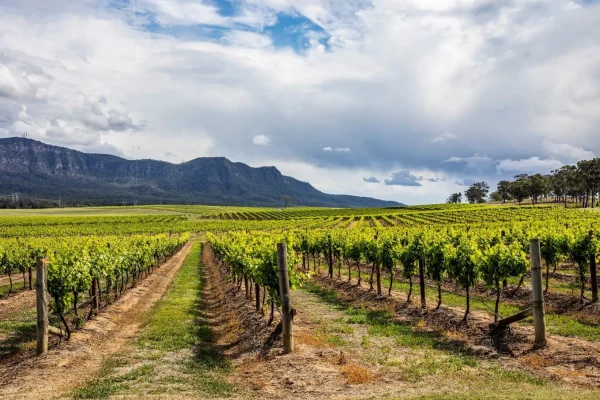Weather in the Blue Mountains
Hiking up through a morning of shifting mist into weather in the Blue Mountains reminds me every time that up here, the sky plays by its own rules.
You leave Sydney to a Sky that’s a lovely dull grey, and before you know it, you hit Katoomba in the middle of a drizzle that’s come from nowhere – and that’s just the way the Mountains like to play it. I’ve driven past the Mount Boyce Weather Station on a morning when the forecast said it would be perfectly clear, and then I’d watch as the fog rolled in from the Central Tablelands, like a fog bank that wouldn’t go away. The wind picks up, the temperature drops, and all of a sudden, your jacket leaves you feeling a bit chilly.
If you’re relying on a simple little forecast icon or a cheerful “a bit of sun and cloud” prediction, you’re on your own up here. Up here, overnight temperatures swing big time, the wind changes direction on you, and those snappy little mountain gusts can have you scrambling to find your jacket.
Pull up a chair, let’s get this right from the start – from a drizzly day to a snow day and those crisp mornings that’ll have you reaching for a cup of hot tea to warm your socks up.

What Makes Mountain Weather So Unpredictable
The Blue Mountains sit about a thousand metres up, and that’s enough to turn ordinary weather into a bit of a drama queen. Winds come in from the west one minute and then from the southwest the next, and before you know it, you’ve got a cold blast going right across the plateau. You can start the day with a cloudy sky and sunny breaks around Leura, and then half an hour later head into Wentworth Falls and it’s all fog and mist – or if you head to Mount Tomah, you might just get a spot of rain thrown in for good measure.
Those who do a lot of walking in the area – and anyone who’s ever joined a day out with the good people at Blue Mountains Tours – know the score:
- Get down into the canyons, and the temperature drops by about 6-8 degrees, so get your lighter jacket ready
- Wind goes rushing down the valleys and messes things up in all sorts of ways
- Clouds just come drifting in off the escarpments like someone’s just changed the whole map
That’s why the readings from the Bureau of Meteorology’s Mount Boyce Weather Station are all that matters – it’s the main weather station for the area, so if Mount Boyce says there’s a 40% chance of any rain, just take a rain jacket along, you don’t want to be stuck in the rain.
Seasons In This Region – A No-Nonsense Guide
The Blue Mountains aren’t exactly known for gentle seasonal transitions – you get four pretty distinct personalities, each with their own set of quirks, moods and favourite outdoor activities. If you’re checking a weather forecast based on Sydney alone, you’re going to get caught out pretty quickly.
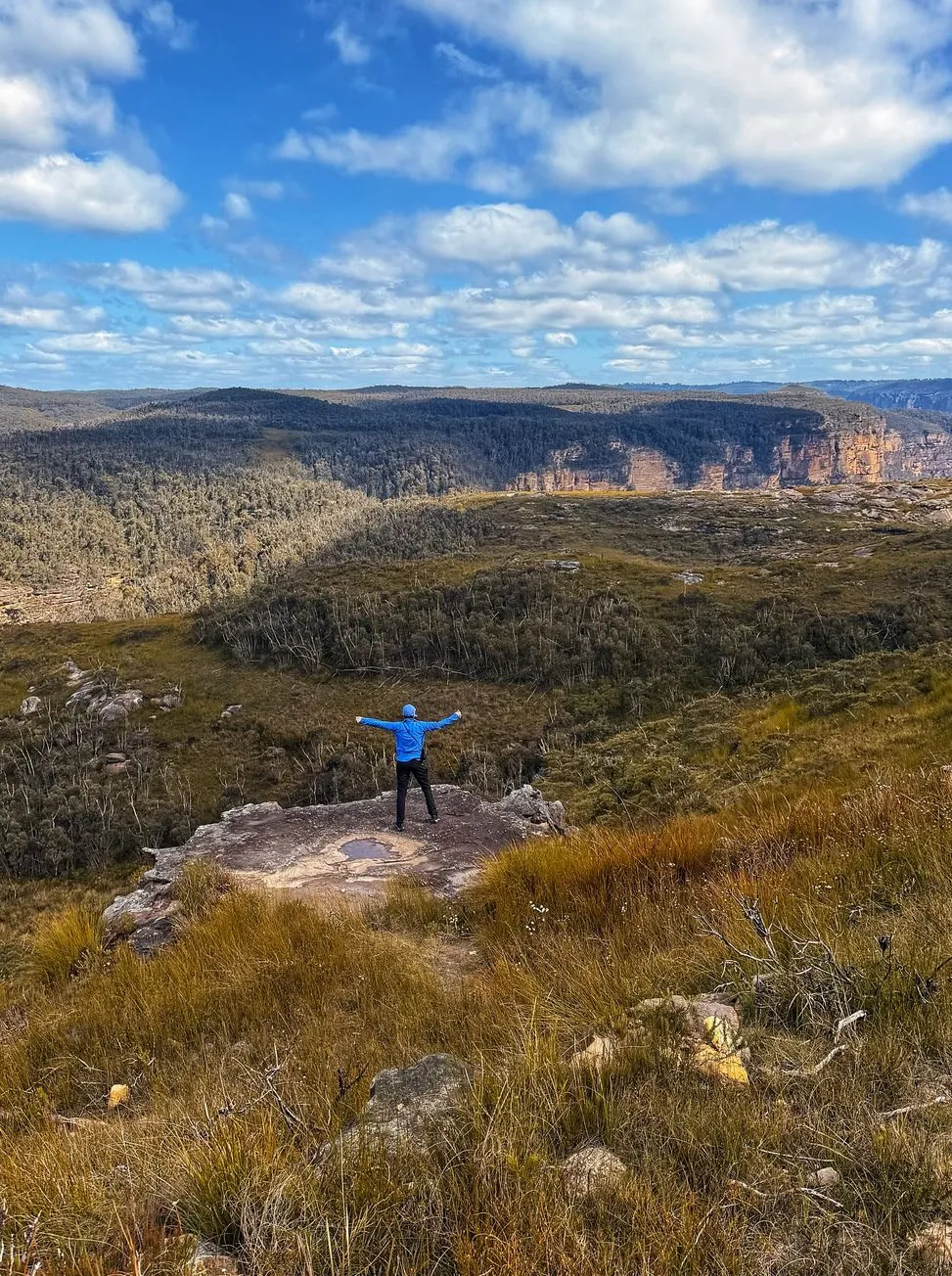

Summer: Warm Days, Wild Storms - Keep Your Wits About You
Summer’s warm days on the plateau mean low 20s in the daytime, but it’s always handy to keep an eye on the horizon – because those storm clouds seem to pop up out of nowhere. It’s not uncommon to see a mix of sun and clouds in the morning, followed by a build-up of humidity and then a rapid-fire storm by the late arvo. Weather radar around Mount Boyce is your best mate when it comes to tracking those fast-moving storms.
Some things to keep an eye out for in Summer:
- Rain turning to full-blown downpours in a heartbeat
- Afternoon instability can bring on some pretty fast-moving storm cells
- Humidity is high this time of year, and that means leeches in the gullies
- Overnight temperatures crash pretty quickly, too
When you do get out and about, you’ll want to keep one eye on the sky at all times.
Autumn: The Gold-Leaf Sweet Spot - Finally Some Clarity
Autumn’s got to be the pick of the bunch – a perfect balance of comfortable and clear conditions. Daytime temperatures stay pretty steady, the humidity drops, and in the mornings, you get some beautiful, misty fog that’s just perfect for photography. Around Mount Tomah Botanic Garden, the change in the leaves from gold to red is just stunning, and that crisp air is ideal for getting out and about on a hike.
Autumn’s best bits include:
- A mix of cloud and sun right through April
- Some of the best views from the lookouts of the year
- The misty morning fog usually burns off by lunchtime
- The tracks are dry enough for long-distance walks
If you want to get out and enjoy the weather without too much stress, Autumn’s the way to go.
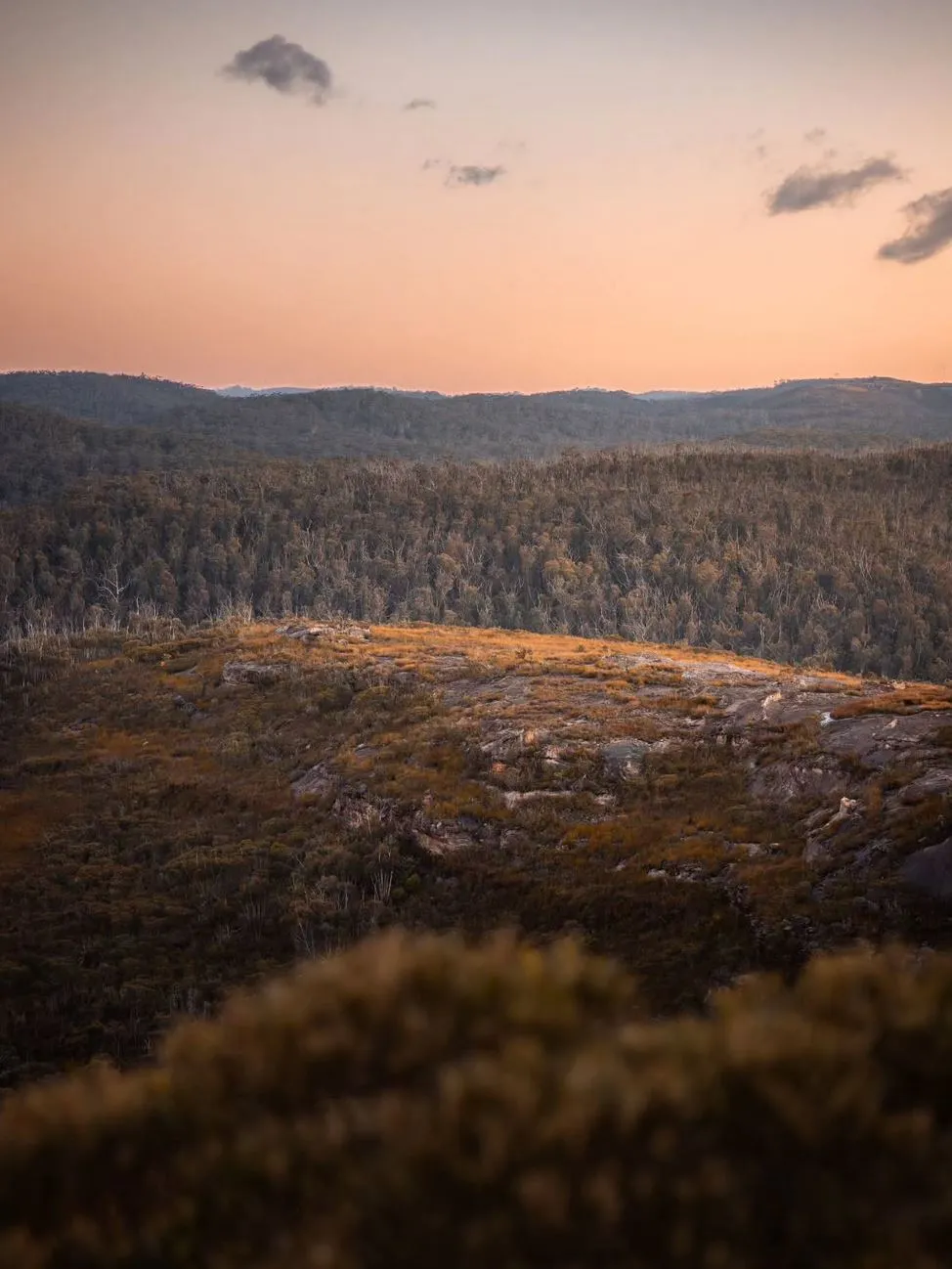

Winter: Ice On The Windscreen, Magic On The Cliffs - The Real Deal
This is the real winter experience up here – nothing like the stuff they get in Sydney, and Mount Boyce often gets down to near-freezing overnight. And the wind from the west? That’s just cold – it can cut right through a puffer jacket.
Some things to expect in Winter:
- Occasional snow flurries or the odd bit of mountain snow
- Pretty clear skies that are perfect for photography
- The patchy fog at sunrise can be pretty magical
- There’s a bit of mixed precipitation when the cold fronts come through
If you’re heading out early, do check the local weather station – rain since 9 AM can be a big deal. And watch out for black ice on the roads – it’s common, especially on the road between Medlow Bath and Blackheath.
Spring: Waterfall Season And Hayfever Roulette - Bring Your A-Game
Spring’s got two sides to it – the waterfalls are flowing beautifully after the winter rains, but the winds out of the west/south-west can be a real nuisance, and the weather can be pretty unpredictable – one minute it’s sunny, the next it’s raining, and then there’s the pollen to deal with.
Some things to look out for in Spring:
- Rain can turn into bursts of heavier showers in a heartbeat
- The sun and clouds seem to be chasing each other all over the valley
- The fog can come in pretty late in the evenings
- The waterfalls are at their peak when it comes to flow – especially around Wentworth Falls and Govetts Leap
If you’ve got hayfever, bring the antihistamines – you never know when the wattle might start to bloom.
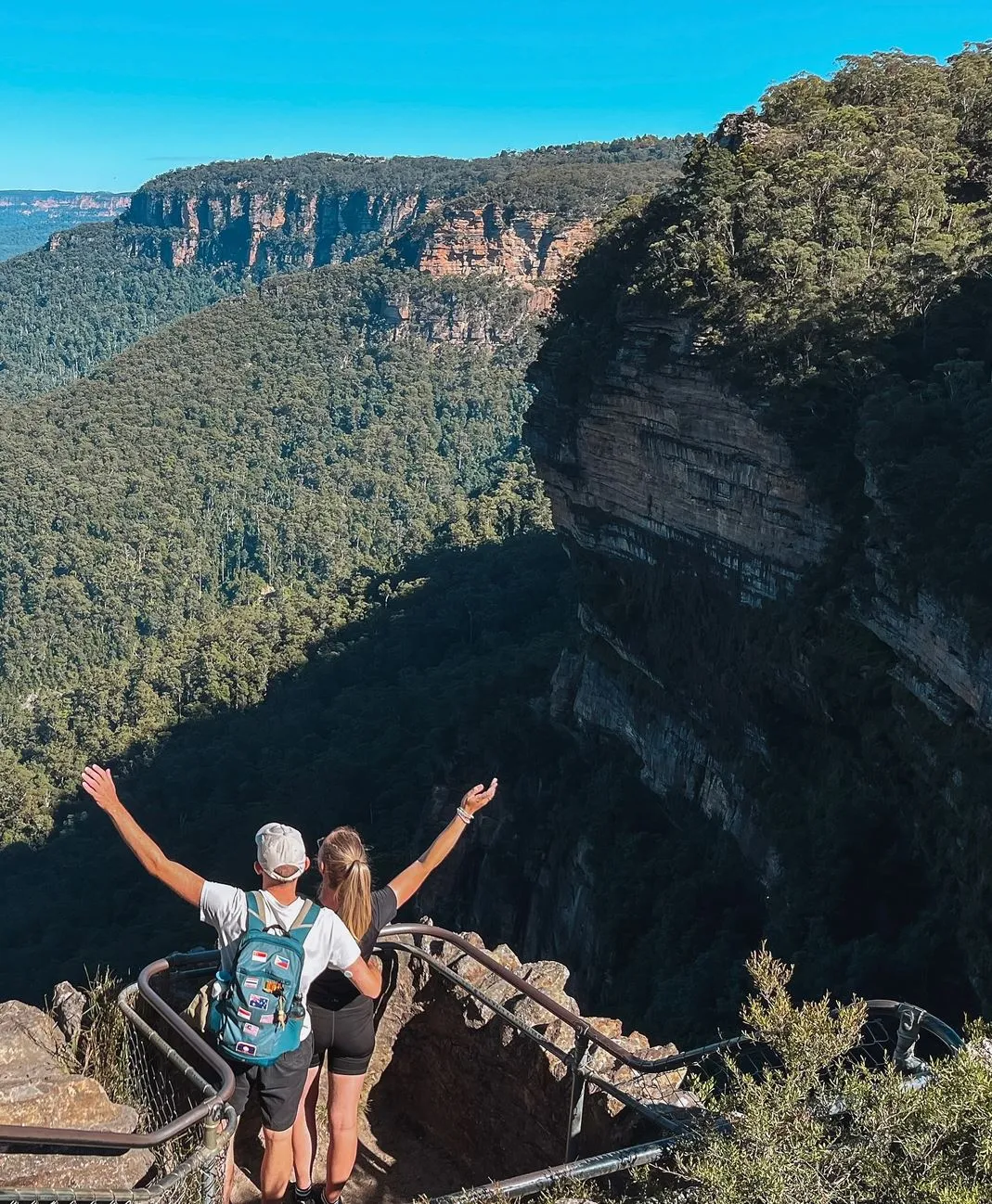
Monthly Weather Snapshot: Your Quick Climate Map
| Month | Avg High °C | Avg Low °C | Rainfall (mm) | Notes |
|---|---|---|---|---|
| Jan | 23 | 14 | 130 | Partly cloudy mornings, stormy afternoons, high Precipitation Chance |
| Feb | 23 | 14 | 150 | Wettest month; mixed precipitation possible |
| Mar | 21 | 12 | 130 | Generally clear, stable walking weather |
| Apr | 18 | 9 | 110 | Crisp air, patchy fog, great for outdoor activities |
| May | 15 | 6 | 80 | Dry air, stronger wind gusts |
| Jun | 12 | 4 | 90 | Cold fronts, scattered flurries, icy mornings |
| Jul | 11 | 3 | 60 | Coldest month; mountain snow possible |
| Aug | 13 | 4 | 70 | Windy; Cloudy with sunny breaks |
| Sep | 16 | 6 | 70 | Waterfall season starts; showery weather |
| Oct | 18 | 8 | 90 | Storms return; temperature swings |
| Nov | 20 | 10 | 90 | A mix of sun and clouds, rising dew point |
| Dec | 22 | 13 | 100 | Early-summer warmth, increasing storm risk |
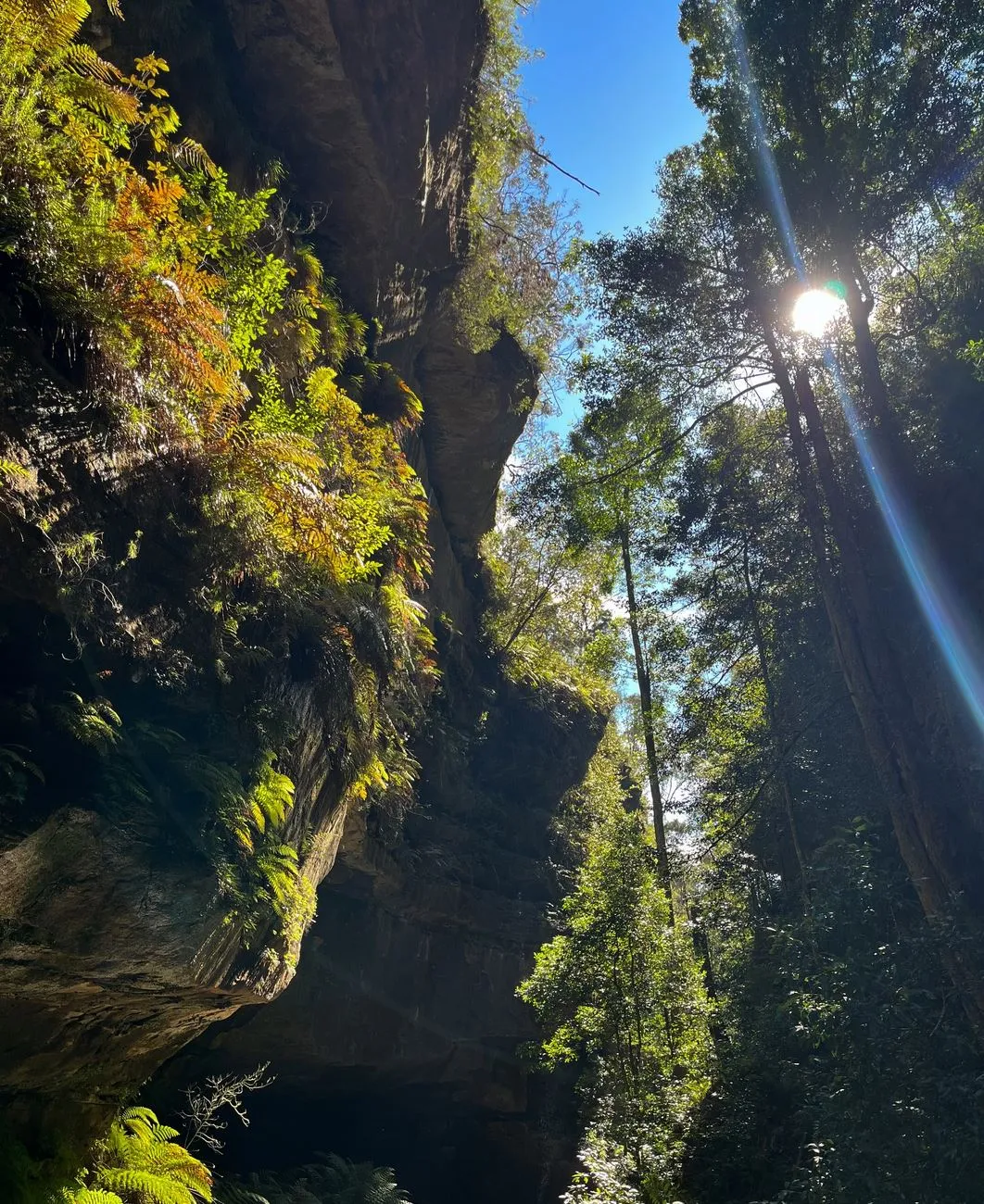
Decode The Forecast Like A Local
Most people rely on generic weather apps without giving them much thought. That’s a bad idea. Instead of just staring at a cute weather icon or an optimistic graphic – a sun with a bit of a cloud tossed in – dig a little deeper:
Take a closer look at:
- Wind direction: know that WNW is warmer, and WSW is a lot colder
- Weather radar: really useful during the storm season
- Hour-by-hour weather, not just some general summary for the day
- Precipitation chance – not just looking at a rain icon – and
- Mount Boyce Weather Station readings – that’s the gold standard
And if you’re using a satellite map or map view, have a squint at cloud build-ups on the horizon coming in from the west – they tend to hit the escarpment first.
Ideal Weather For Exploring
Bushwalking
- Autumn and spring are the perfect times for great track conditions
- Summer means starting early, because the storms can roll in fast, and
- Winter – well, that’s when the views are crisp, but be careful of any icy patches
Photography
- Winter gives you those super clear shots
- Autumn’s got the gentle light, and the gold tones are just magic
- Spring, meanwhile, has the waterfalls in full song
Lookouts
Best visibility usually kicks in after the mixed precipitation clears – that moment when the cold, dry air sweeps the valleys clean.
When Are The Best Times?
- After storms, the afternoons are usually good
- Early winter mornings are great too
- Late autumn’s got some of the best light in the golden hour


Staying Safe When The Weather Turns Bad
Weather in the Blue Mountains can change in the blink of an eye – like a cheeky kookaburra grabbing a sandwich from under your nose.
So be smart:
- Fog starting to roll in late? Stick to the marked tracks.
- Strong wind gusts? Avoid the exposed lookouts.
- Rain since 9 am? Expect it to be slippery on the rocks
- Mixed precipitation? Avoid canyoning altogether.
- Low air quality? Groups with sensitive folk should keep things easy.
Always check in with NPWS trail alerts and weather radar before heading out.
A Weather Story From Years On Mountain Roads
One winter morning, I was crawling along the highway past Mount Boyce when the Weather Station reported overnight temperatures below zero and wind gusts of 70 km/h. Within minutes, the fog rolled in. I pulled over at a fire trail, boiled the billy and waited.
By the time the fog cleared, the valleys were shrouded in cloud, the escarpments were gold, and the whole Blue Mountains National Park looked like a Place of Beauty made by chaos and calm.
It’s mornings like that – watching the sky go from a waning crescent to the first hints of sun – that remind me why mountain weather is worth the hassle.

FAQ
Is it colder in the Blue Mountains than in Sydney?
Usually 8–12°C. Overnight temperatures can drop quickly, especially near Mount Boyce.
Does it snow in the Blue Mountains?
Occasionally, scattered flurries and light mountain snow in July or August.
What’s the best resource for accurate weather?
Mount Boyce Weather Station, nearby Personal Weather Stations and local Weather Radar.
Are summer storms dangerous?
Yes. Sudden updrafts and fast-moving cells require caution, especially on lookouts.





